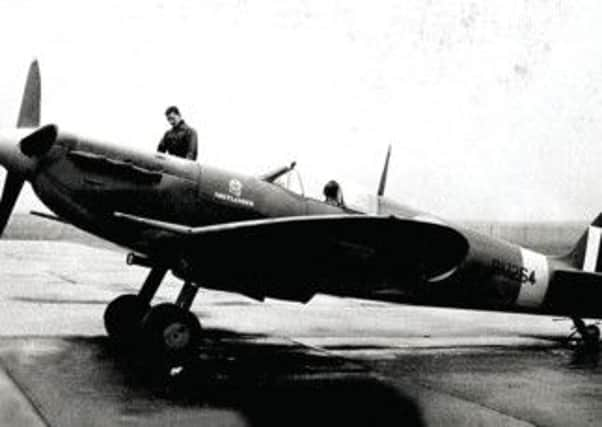Tale of ‘Shetlander’ spitfire and pilot uncovered


Margaret Stuart was researching the role of Shetland women in the Second World War when she “stumbled” across the story of how islanders raised more than £250,000 in today’s money to fund the aircraft.
She told Scotland on Sunday she tracked down the sister of the Shetlander’s pilot, Flight Sergeant Walter Wicker, in Chicago. She said he forfeited his American citizenship at the age of 20 and hitchhiked to Canada to join the RAF.
Advertisement
Hide AdWicker went on to carry out eight sorties in the Shetlander before being shot down over the English Channel in 1942.
“It is a very humbling story, both on the part played by Shetlanders who raised so much money to fund a Spitfire and Flt Sgt Wicker,” said Stuart, who lives in Walls on the west side of the islands.
She added: “I stumbled on it by accident and it took over my life. I was researching Shetland women in the wartime for an exhibition when I noticed an advertisement on the front page of the Shetland News – on 22 August, 1940, about a Fighter Plane Fund. It caught my attention and I wondered what that was all about.”
As the Battle of Britain was raging and planes were being lost at an alarming rate, a campaign was launched by Lord Beaverbrook, the minister of aircraft supply at the time.
He was appealing to companies and individuals across the British Empire to make donations of £5,000 – around £250,000 nowadays – for the construction of new aircraft.
Stuart said: “The Shetland community were really enthusiastic and supported this campaign to raise enough cash to fund a Spitfire.
Advertisement
Hide Ad“It involved ten weeks of intensive fundraising; £5,000 was a huge sum of money in 1940. It was kicked off with two shopkeepers in Lerwick who gave £500 – a huge amount.
“Every week, every donation was acknowledged in the columns of the Shetland News – even if they gave six pence they were there. The amounts were given in districts of the islands. There were more than 7,000 individual donors – an amazing feat. They had collection boxes in shops, dances and the Boys Brigade paraded a model Spitfire through the streets.
Advertisement
Hide Ad“The response was spontaneous. The story unfolded at breathtaking speed. Everyone wanted to join in, including children giving their pocket money. Someone in Gulberwick sold 200 hens, at one penny a hen.”
By the end of October, the islanders had exceeded their target, and eventually handed over £6,000 to the war effort.
The Spitfire was built in 1942 and named “Shetlander” by islanders. “Bonxie”, the name in Shetland dialect for the Great Skua, was suggested, but rejected as being unknown outside the islands.
By then, the US had entered the war. On 12 April, 1942, the Shetlander became part of Squadron 133, the American Eagles Squadron, which was formed from American volunteers who had given up their US citizenship to serve with the RAF.
Stuart said: “Walter was an exceptional young man. He came from a wealthy Chicago family – his mother was a famous children’s entertainer known as the ‘Singing Lady’ – but he had such a strong social conscience.
“I tracked down his sister who remembered how he so hated Hitler. He had a strong sense of justice.”
Advertisement
Hide AdWicker was the first and only pilot of the Shetlander. His log book, which his sister still owns, states on 13 April, 1942, he “finally got a kite [Spitfire]”.
“Many of the airmen wanted to fly the most glamorous plane in the world, the Spitfire, and help the war effort,” Stuart said. “He made 18 training sorties and eight combat missions.”
Advertisement
Hide AdOn 27 April, the squadron was escorting six Bostons on a bombing mission when they were attacked by German fighter planes.
Stuart said: “The Shetlander was the last to leave the fight. We will never know what damage he would have done to the enemy before being shot down.”
Wicker’s body was washed up in Dover and he is buried in nearby Folkestone.
Stuart, who has published a book on the story called The Spitfire “Shetlander”, visited the grave, which bears the words: “He died that democracy may live.”
The author and artist, whose mother is originally from Shetland and who moved to the islands in the 1960s, said: “He gave his life for democracy. I found the story totally engrossing and very humbling, especially as I got involved with the family.
“Hopefully it will now show some of the sacrifice made during the war. It’s part of our history, something we should all remember with pride.”
Twitter: @AlistairMunro1